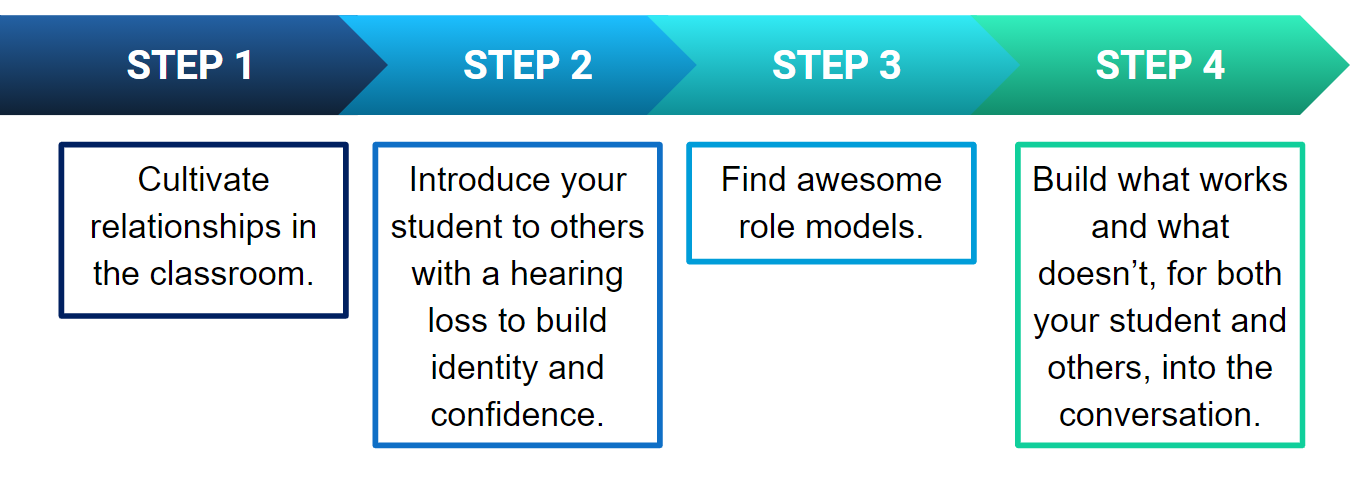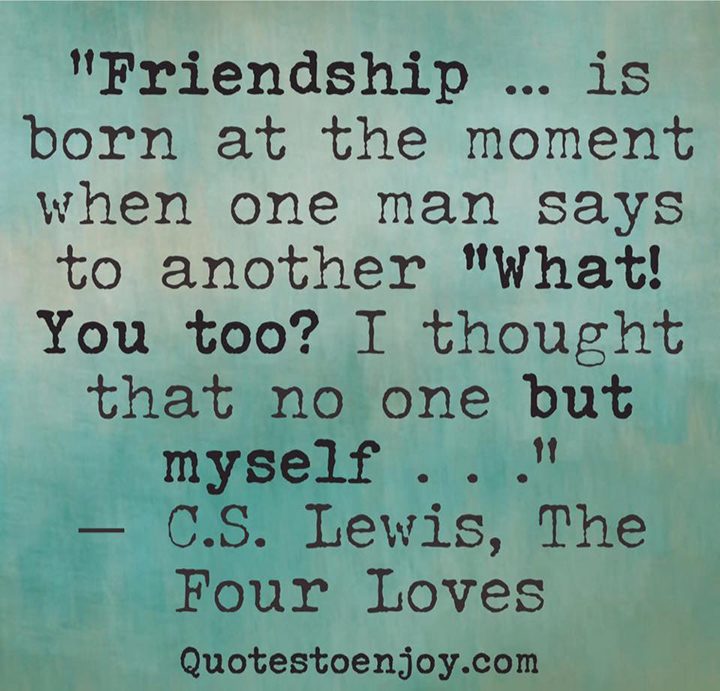Meeting the Social Needs of DHH Students
Jul 15, 2021
I recently spoke to teachers and family members in New York about meeting the social needs of Deaf and Hard of Hearing students. This is a topic that I am passionate about and one that is a special challenge - especially for students who are mainstreamed.
I'm passionate about this topic because of the statistics of mental health for deaf and hard-of-hearing individuals. Let's take a look at them:
Individuals who are deaf or hard of hearing:
* Are 1.5 times more likely to feel left out
* Have a 25% higher incidence of loneliness
* Are 1.46 times more likely to experience mental problems
* Are 28% more likely to find overall mental health fair or poor
Why are students who are deaf or hard-of-hearing more likely to experience these feelings of isolation?

Lack of access to people and missing what's going on around you can create feelings of isolation. For many students who are deaf or hard of hearing, they are surrounded by this reality all the time. On top of that, when people don't explain something you missed or misunderstood, you begin to feel like you are not important enough to know (those dreaded words of "I'll tell you later.")
In addition, many students don't have any deaf or hard of hearing role models or others to look up to, giving them the feeling that they are the only ones experiencing life the way they do. Because of this lack of role models, they lack the opportunity to build a strong self-identity based on being person who doesn't hear and wonder where they fit into the world. And finally, because of their hearing loss, they may feel that they have a disability and are somehow "less" than their peers. It should be noted that Teachers of the Deaf and members of the Deaf Community don't consider hearing loss a disability - however, it is not uncommon for our students to get an "I can't" impression of themselves when they lack strong deaf/hard of hearing role models, get pulled for special services that their peers don't receive, or need extra help because of lack of access.
It's during the teen/tween years that this need for social belonging really kicks in. During the ages of 10-17, adolescents undergo massive brain development.
What happens during the ages of 10-17?
- This is a time of maturing physically, emotionally and psychologically
- Friendships and peer groups hold great importance
- Students become sensitive to their appearance
- It becomes a time of Personal discovery
- Adolescents attempt to define themselves through peer interactions
- Time with their peers reflects self-worth
- There becomes a strong desire for close friends, social interaction, and independence
According to Leslie Stepp, author of Our Best Shot, adolescents are constantly analyzing themselves through the following questions:
- Am I competent?
- Am I loved?
- What am I good at?
- Am I normal?
And.... they are gathering their answers based on the success of their social interactions.
Adolescents need to develop a sense of self and personal identity. There are 2 kinds of identity:
1. Social Identity: For adolescents with hearing loss, the degree to which they identify with peers who are deaf or hard of hearing, with hearing peers, or with both, determines their social identity. This is their tribe, their group, the peer group in which they "belong."
2, Personal identity, which involves answering the question “Who am I?”, and focuses on our own beliefs, ideas, and direction in life. This is how a person identifies himself.
During these adolescent years, how one finds their identity is based on their social interactions. Successful interactions lead to a strong sense of self. Unsuccessful interactions lead to role confusion and a weak sense of self.
Adolescents must answer “Where do I belong?”.
All students go through this stage of development, but for a teenager with a hearing loss, adolescence creates an additional struggle and increased stress associated with attempts to establish close friendships and define self-worth.
You may have noticed that kids gravitate towards others like themselves. They have a strong desire to fit in with their friends, and they need social support during this time. These relationships can protect against teen depression and even suicide.
The struggle for students who are deaf or hard of hearing, which is a low incidence population (approximately 1% of students have a hearing loss), is that it can be very difficult to find others that students can feel are “like me.” Of course, it should be noted that not all kids with hearing loss struggle in this way.
So how do you know if your child, or a child you work with, is suffering the impact of isolation?
There are some visible characteristics of isolation, such as anger, social phobias, depression, frustration, nervousness, feelings of being unliked or unloved, and being self-critical to name a few.

Perhaps you've suffered some of the same things through the Covid epidemic. It's interesting to note the impact of lockdowns and isolation that was a result of Covid. As a nation, people were concerned about the social and emotional ramifications of isolation on our children during the pandemic. It is important to note that this experience is often the everyday reality of students and adults with hearing loss.
So what do we do to fight isolation for our students and children who are deaf or hard of hearing?
First and foremost, we must open the conversation with them. We must be intentional about our awareness of the situation. We must let our students and kids know that we care about them and their need to connect with others. For teachers, sometimes this means putting academics aside for a bit to connect on a different level with our students. We must let them know that they are not alone. In general, this is a check-in and an open conversation to see how things are going.
After establishing the ability to have transparent conversations and letting your students or kids know they have a support system in place, I have a 4 part system to cultivate relationships and build a strong self-identity for mainstream students who are deaf or hard of hearing.:
Step 1: Cultivate relationships in the classroom
Step 2. Introduce your student to others with a hearing loss to build identity and confidence.
Step 3: Find awesome role models.
Step 4: Build what works (and what doesn’t), for both your student and others, into the conversation.
The Online Itinerant's 4 Part System:

Let's do a little deep dive into some of these.
Step 1: Cultivate relationships in the classroom.
There tends to be a focus on this in the elementary setting but can get overlooked in middle and high school, when relationships with peers become especially important. I like to connect closely with parents and general education teachers on this topic and become intentional about supporting friendships. To build sensitivity and awareness, I like to plant quality books with deaf characters in a classroom (I usually lean towards the English/Lang Arts classroom). With tactfully placed books within the classroom, hearing peers may "accidentally" find and read them, building new awareness and sensitivity about life with hearing loss. As the teacher notices when a particular student has read this book, this is a great opportunity to cultivate a potential friendship between them and their deaf or hard of hearing peer.
I also encourage offering a sign language class or sign language club for all students in the school. Even if your deaf/hard of hearing student doesn't sign, this is still a great way to help your student build an identity for himself as he can be exposed to sign language and evaluate how it may or may not fit into his life, helping to build that self-identify as a person with hearing loss. Your student will also see how fascinated his or her peers are in sign language and may take a little pride in learning it. Again, when you see certain hearing classmates with this interest, this is a great opportunity to try to cultivate and grow a friendship.
In addition, working with other teachers to identify a peer that might have something in common with your student is a great way to identify others with common interests. You can help cultivate a friendship from peer groups, such as finding a buddy to work within small groups, or getting your child/student involved in after-school activities is really important. And parents, please work with the teachers and staff and see who might be a good peer to invite out to ice cream with or come over to the house to watch a movie, nurturing some after-school relationships.
Step 2.: Introduce your student to others with a hearing loss to build identity and confidence.
This is much easier for a teacher to do than a parent, well, because you have easy access to a caseload of students. Although you may automatically think this means taking students on social field trips, it doesn't have to. There are a lot of ways to connect students with other students without ever having to plan for a bus!
1. Consider doing a Goosechase (go to https://www.goosechase.com/edu to create a free educator account) and team students and their families up for a photo treasure hunt
2. Have students send video messages to others
3. Gift exchange: Have students create special gifts for each other and bring it when you visit your students
4. Create a shared Google Doc with "would you rather" questions to engage students in conversation
5. Invite families to movie nights where you can show how students can access closed captioning at a local movie theater - then arrange to meet for ice-cream after the movie
Parents, make sure you attend any events that are for kids with hearing loss, or the Deaf Community in general in your area. The more you can connect with other parents and other students, the better. Ask your Teacher of the Deaf to help connect you and your child to others in the area.
These are just a few ideas - stay tuned to a future blog post for more. The lesson is, the more you can expose students to others and they can see and learn about their similarities and differences, the better.
Step 3: Find awesome role models.
There are some amazing role models in the media these days! Braden Baker, Mandy Harvey, Millie Bobby Brown, Nyle DiMarco, Derrick Colemen - just to name a few! There are also some great magazines that you can subscribe to that can introduce students to others, such as Hearing Our Way and Deaf Life. Find interviews, read articles, and identify as much as you can about these role models. Ask your student about what kind of challenges to they think these role models have dealt with and how they may have overcome them. Get a variety of backgrounds and ages, both male and female, to show that deaf really CAN DO ANYTHING! It's important to build into the conversation that these people do still experience the same challenges that your student or child experiences - truly they are not alone.
This brings us to......
Step 4: Build what works (and what doesn’t), for both your student and others, into the conversation.
While going through steps 1-3, it is important to have conversations about what works and what doesn't, how it feels in each circumstance, what would you/the other person change next time, etc. . This critical thinking exercise goes over not only for your child or students situation but also for their peers and the role models you're learning about. For example, when learning about Millie Bobby Brown, who is deaf in one ear, we talk about what it would be like for her to not hear the director give directions and what she potentially does to help in these situations. We discuss outcomes of different scenerios and ask if others have ever experienced this same thing. This humanizes these experiences. It brings value to show that there are successful strategies and unsuccessful strategies, and they vary from day to day and circumstance to circumstance and that all people experience similar situations. This not only builds in problem-solving for your child or student but also shows that they are not alone. I have often had students open up when the focus was not on them, but the conversation was around someone else who they could relate to.
In life, we all appreciate connecting with others who share a certain bond. Maybe it is a memory, a hometown, a college, or a favorite sports team. Maybe it is a struggle in life that you have pushed through and overcome. We can all relate to the value of this.
Supporting our students and children who are deaf or hard of hearing in this way can help support their social and emotional development, relieve feelings of isolation, and help them build a strong self-identity as an empowered person with hearing loss instead of feeling like an outsider. In my opinion, this is truly the foundation for success in which all else is built upon.


